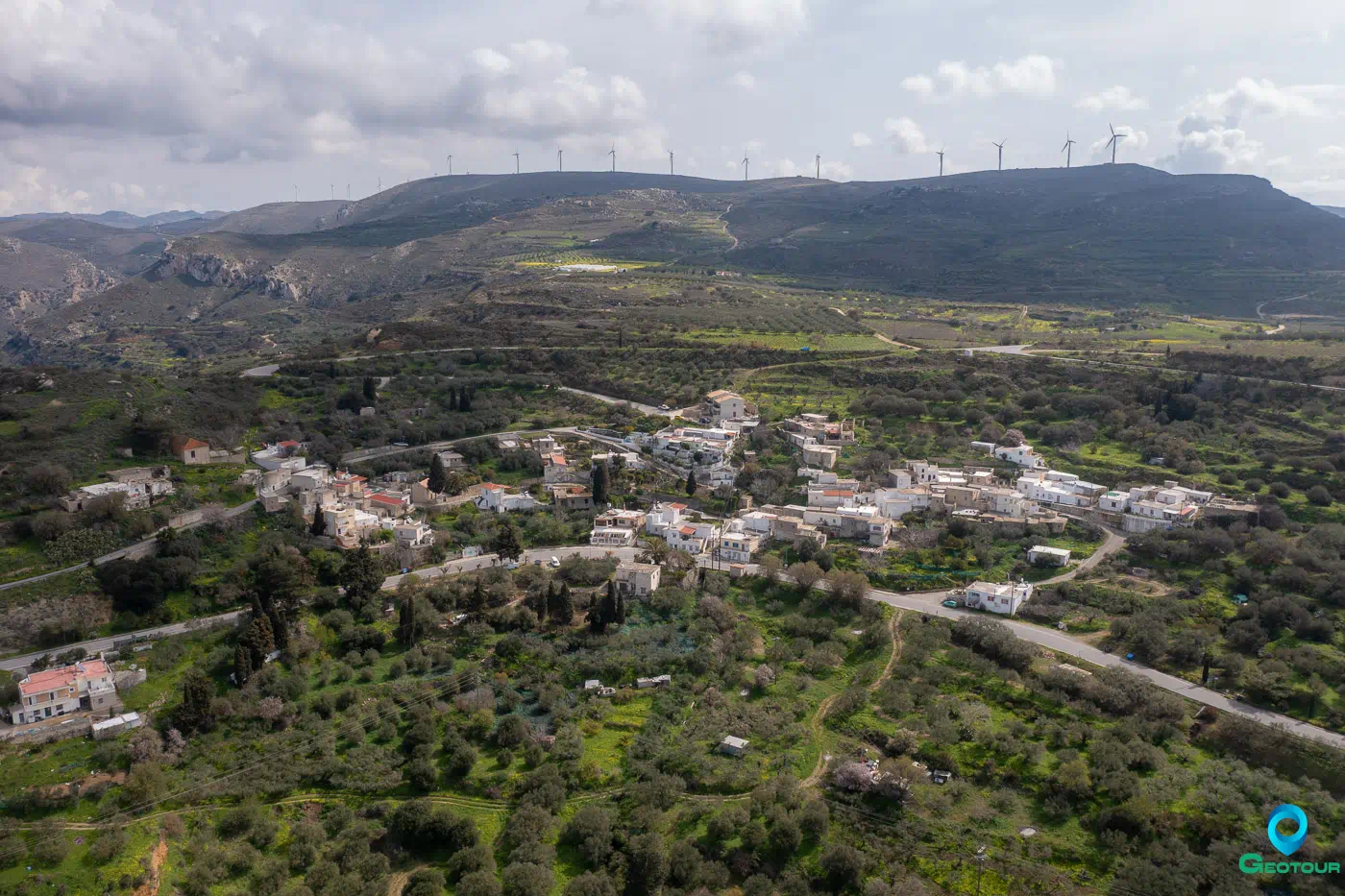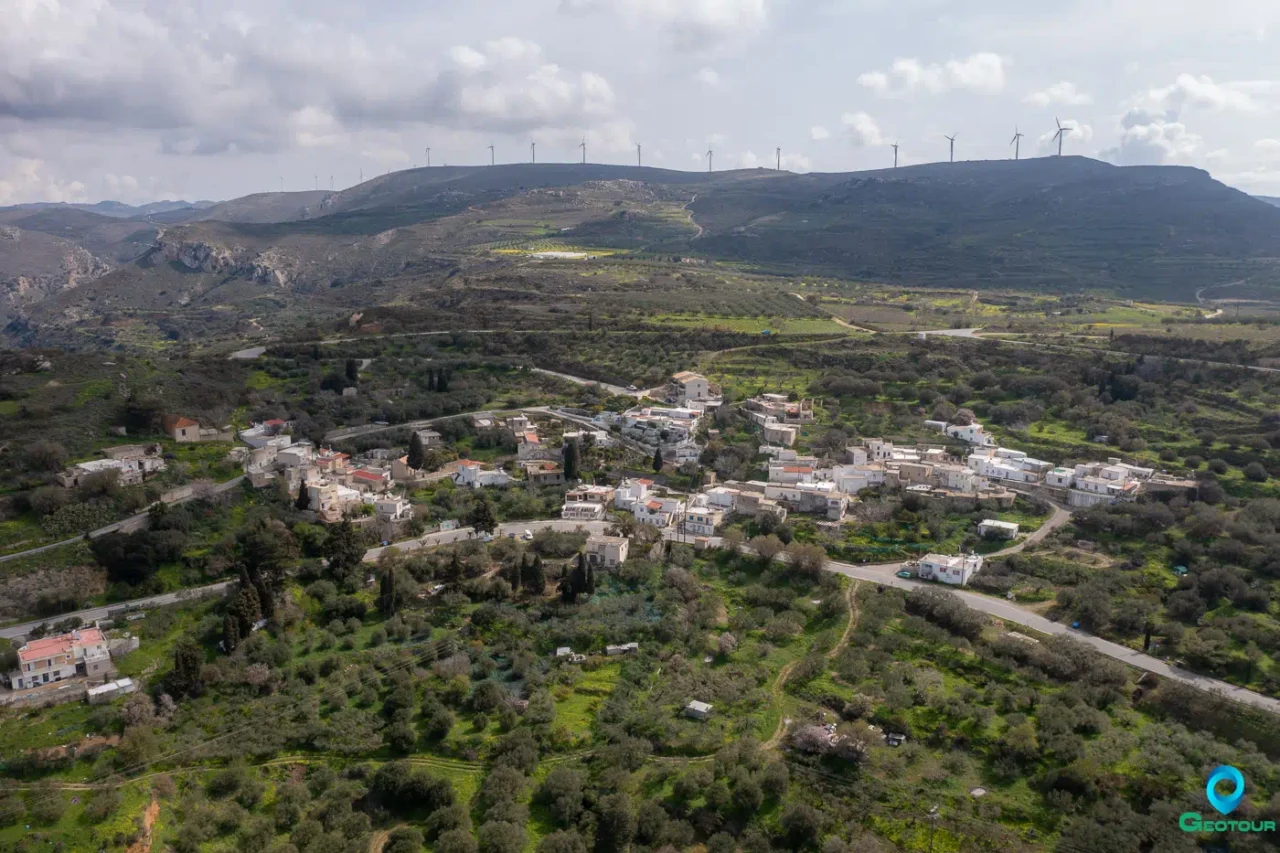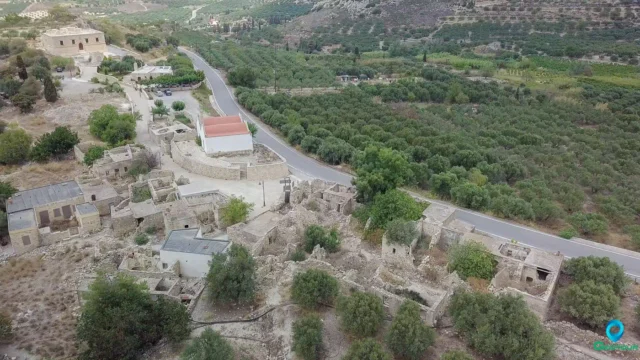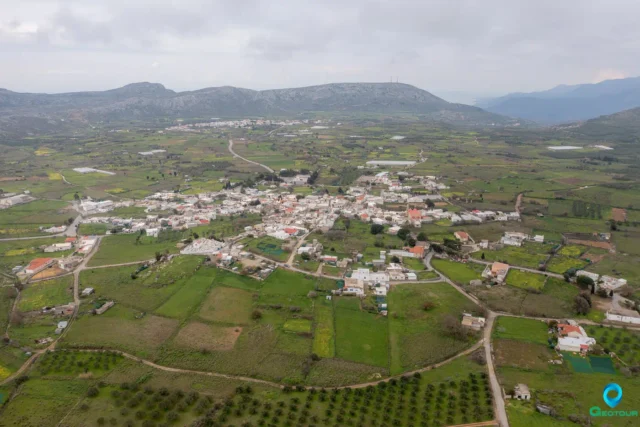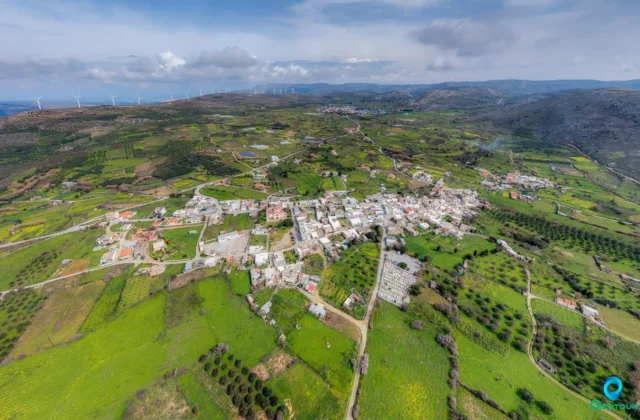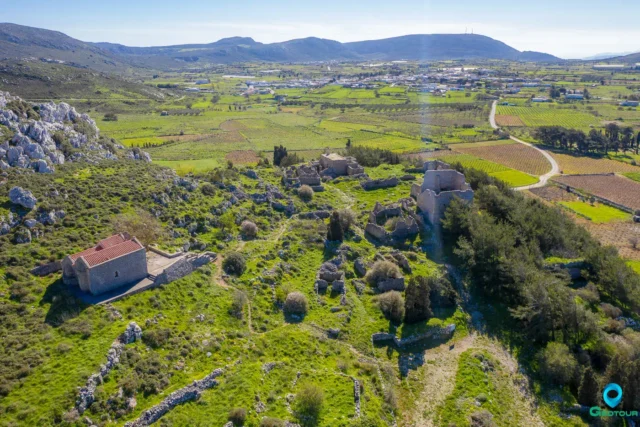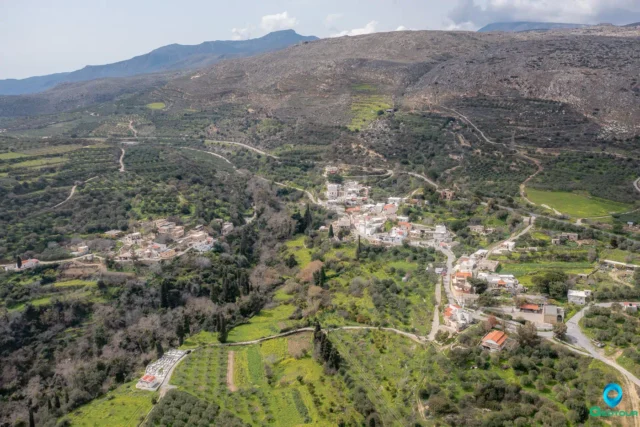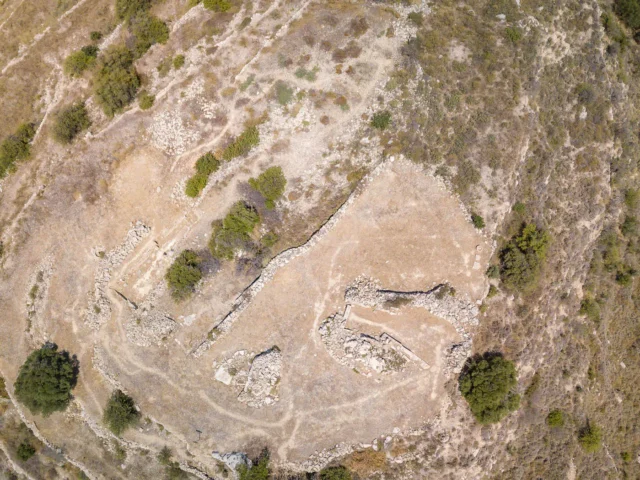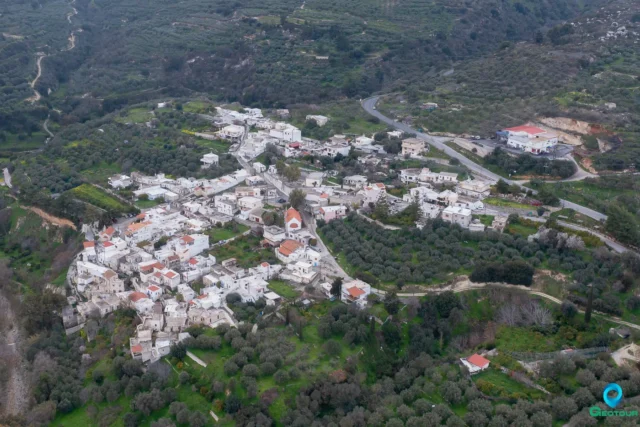Papagiannades (Παππαγιαννάδες) is a village and the seat of the homonymous community in the municipality of Sitia, in the regional unit of Lasithi, eastern Crete. According to the 2011 census, it has 55 inhabitants. It is built at an altitude of 480 meters, 19.7 kilometers south of Sitia.
History
On the hill of Ai Lias, at an altitude of 440, there was a peak sanctuary. In the Monastiraki location, remains of a Minoan settlement are preserved. The village is not mentioned in the Venetian censuses. The oldest mention of it is in the Egyptian census of 1834, where it is mentioned as Papa-Jannadho with 8 Christian families. Hourmouzis Vyzantios mentions it in 1842 as Papagiannado. In 1881 it is mentioned as Papagiannado with 77 inhabitants, all Christians, and belonged to the municipality of Handras. In the 1900 census it is mentioned as Papagiannadon, in 1920 as Papagiannadoi, in 1928 as Papagiannada and from 1940 as Pap (p)giannades. The name of the village is etymologically derived from the surname of its settlers, Papagiannades.
Landmarks
In the village is the church of Panagia Eleousa, with preserved frescoes. The founder’s inscription mentions the year 6872, which corresponds to the year 1363-1364. According to Gerola, part of the inscription reads “of Parilios and Sofronia nun of their synod … in the reign of John Palaiologos and Andronikos his son Year ςΩΟΒ”. The village is famous for its oil and in the center of the settlement is the factory (the old oil mill).
The history of A.E.S. Papagiannades started in 1985. Its facilities are located at the exit of the village of Papagiannades, 19 kilometers from Sitia. The cooperative’s building was built in 1984 and operated as an oil mill. Today it has 256 members with 10,000 acres and 225,000 trees. The cooperative is active in the production and marketing of olive oil, serves 500 olive producers and the capacity of the oil mill is 1000 tn/year.
Papagiannades or Papagiannado, as its name comes from its first settlers, is an amphitheatrically built beautiful village of Sitia. Mountainous and rocky, however, it is famous for the quality olive oil it produces.
Although its history is said to begin in the Minoan period, we first meet Papagiannades in the Egyptian census of 1834, where it is mentioned as Papa-Jannadho with 8 Christian families.
The name of the village, according to Stergios Spanakis, is encountered differently in almost every census since then. We see it written as Papagiannado, Papagiannado, Papagiannadon, Papagiannadoi, Papagiannada, until in 1940 Pap (p)giannades is established, a name that certainly comes from the surname of its settlers.
On the hill of Ai Lias, at an altitude of 440 meters, there was a peak sanctuary for the worship of an ancient deity, while in the location of Monastiraki, remains of a Minoan settlement were found.
Its Venetian presence is confirmed by the church of Panagia Eleousa, which bears a founder’s inscription with the years 1363-1364.
According to Gerola, part of the inscription reads: “of Parilios and Sofronia nun of their synod … in the reign of John Palaiologos and Andronikos his son Year ςΩΟΒ”.
At the edge of the settlement there is an untouched old olive oil production factory. Its interior is preserved intact since it stopped operating and it is interesting to visit it, although it does not operate as a museum. Going up towards the settlement we meet a fountain that was once the focal point of contact between the inhabitants as they drew water from there for the needs of their homes while watering their animals at the same time.
Papagiannades is a typical Sitian village, with narrow streets, flowered courtyards, cheerful, active and hospitable people. From the point where they are built one can see endless olive groves for which the area is famous.
Settlement: Key Points
- Historical References: The village is first mentioned in the Egyptian census of 1834. The church of Panagia Eleousa has a founder’s inscription dating back to 1363-1364.
- Location: Papagiannades is located in eastern Crete, in the municipality of Sitia.
- Historical Significance: The village has a long history, with evidence of Minoan settlement and Venetian presence.
- Population Data:
Year |
Population |
Notes |
|---|---|---|
1881 |
81 |
77 Christians, 4 Muslims |
1900 |
109 |
|
1920 |
135 |
|
1928 |
137 |
|
1940 |
157 |
|
1951 |
160 |
|
1961 |
154 |
|
1971 |
122 |
|
1981 |
109 |
|
1991 |
85 |
|
2001 |
79 |
|
2011 |
55 |
|
2021 |
69 |
- Current Status: Papagiannades is a small village with a population of 69 inhabitants in 2021. It is known for its olive oil production and its traditional Cretan character.
References

